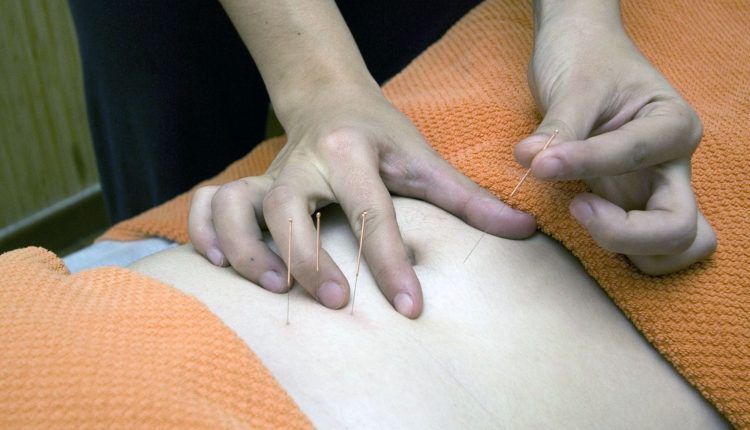THE BENEFITS OF ACUPUNCTURE FOR CHRONIC PAIN IN GOUT PATIENTS

Gout is a type of arthritis that occurs when there’s a buildup of uric acid crystals in the joints, leading to inflammation, pain, and discomfort. Gout patients experience recurrent episodes of intense pain, often referred to as gout attacks or flares. These attacks can cause significant discomfort and affect a person’s quality of life. Here’s a comprehensive explanation of gout and its impact on patients:
1. Uric Acid and Gout: Uric acid is a natural waste product produced by the breakdown of purines, substances found in certain foods and body tissues. In a healthy body, uric acid dissolves in the blood and is excreted through the kidneys. However, in some individuals, uric acid levels can become elevated, leading to the formation of uric acid crystals in the joints, particularly in the big toe.
2. Gout Attacks: Gout patients experience episodes of gout attacks characterized by:
• Sudden Onset: Attacks often occur suddenly, typically at night, and the pain is severe.
• Joint Inflammation: Affected joints become swollen, red, and extremely tender to the touch.
• Intense Pain: The pain during a gout attack is described as sharp, excruciating, and almost unbearable. Even the slightest touch or movement of the joint can trigger intense discomfort.
• Limited Mobility: Due to the pain and inflammation, patients may have difficulty moving the affected joint during an attack.
3. Triggers: Certain factors can trigger gout attacks, including:
• Diet: Consuming foods high in purines, such as red meat, seafood, and alcohol, can increase uric acid levels.
• Dehydration: Insufficient fluid intake can lead to higher uric acid concentrations.
• Obesity: Excess weight is associated with higher uric acid levels.
• Medical Conditions: Conditions like hypertension, kidney disease, and diabetes can contribute to gout risk.
4. Chronic Gout: Without proper management, gout can become a chronic condition. Over time, frequent gout attacks can lead to joint damage and deformity. Chronic gout may also lead to the development of tophi—hard, uric acid crystal deposits beneath the skin.
5. Diagnosis: Diagnosing gout involves a combination of clinical assessment, medical history, physical examination, and laboratory tests to measure uric acid levels in the blood or fluid extracted from an affected joint.
6. Treatment and Management: Gout treatment aims to relieve pain, reduce inflammation, and lower uric acid levels:
• Medications: Nonsteroidal anti-inflammatory drugs (NSAIDs), colchicine, and corticosteroids are commonly prescribed during gout attacks to manage pain and inflammation.
• Uric Acid-Lowering Medications: For chronic gout, medications like allopurinol or febuxostat are used to lower uric acid levels and prevent future attacks.
• Lifestyle Changes: Dietary modifications, weight management, hydration, and limiting alcohol consumption can help manage uric acid levels.
• Patient Education: Educating patients about triggers, lifestyle changes, and the importance of consistent medication can empower them to manage their condition effectively.
7. Impact on Patients: Gout can have a significant impact on patients’ lives:
• Physical Discomfort: The pain during gout attacks can be debilitating, affecting movement and daily activities.
• Psychological Impact: Chronic pain and the unpredictability of gout attacks can lead to anxiety, depression, and diminished quality of life.
• Work and Social Life: Gout attacks may interfere with work commitments and social engagements.
8. Long-Term Management: Gout patients often require ongoing management and lifestyle adjustments to prevent gout attacks and minimize long-term joint damage. Regular communication with healthcare providers, adherence to treatment plans, and maintaining a healthy lifestyle are crucial components of long-term gout management.
Understanding gout and its impact on patients allows for more empathetic care and support. If you suspect you have gout or are experiencing symptoms, it’s important to consult a healthcare professional for proper diagnosis and guidance on managing the condition effectively.
Acupuncture is an alternative therapy that involves inserting thin needles into specific points on the body to stimulate energy flow and promote natural healing. While the use of acupuncture for gout-related chronic pain is not extensively studied, there is growing interest in its potential benefits for managing pain in various conditions, including gout. Here’s an explanation of the potential benefits of acupuncture for chronic pain in gout patients:
1. Pain Relief: Acupuncture is often sought for its potential to alleviate pain. For gout patients experiencing chronic pain, acupuncture may help reduce discomfort by:
• Stimulating Endorphins: Acupuncture is believed to trigger the release of endorphins, which are the body’s natural pain-relieving chemicals. These endorphins can help manage the pain associated with gout flares.
2. Inflammation Reduction: Acupuncture might have anti-inflammatory effects that could benefit gout patients by:
• Modulating Immune Response: Some studies suggest that acupuncture can modulate the immune response and reduce inflammation, potentially contributing to the relief of joint inflammation in gout.
3. Improved Blood Circulation: Acupuncture is thought to enhance blood circulation, which can promote healing and better delivery of nutrients to affected areas. This may help in reducing pain and inflammation associated with gout.
4. Nervous System Regulation: Acupuncture is believed to influence the nervous system, including nerve signals related to pain perception. By stimulating specific acupuncture points, it’s possible that acupuncture can affect nerve activity and reduce pain signaling.
5. Relaxation and Stress Reduction: Chronic pain can lead to stress and tension, which might exacerbate gout symptoms. Acupuncture sessions are often relaxing and can promote stress reduction, potentially easing tension that could contribute to gout flares.
6. Holistic Approach: Acupuncture is rooted in a holistic approach to health, addressing not only physical symptoms but also emotional well-being. For gout patients dealing with chronic pain, acupuncture sessions may provide a comprehensive approach to pain management.
7. Individualized Treatment: Each acupuncture session is tailored to the individual’s specific condition and needs. Acupuncturists consider the patient’s overall health, medical history, and pain pattern when selecting acupoints to target.
8. Complementary Approach: Acupuncture is typically used as a complementary therapy alongside conventional medical treatments. Gout patients should continue to work closely with their healthcare providers to ensure a comprehensive pain management plan.
9. Mind-Body Connection: Acupuncture involves both physical and psychological components. By addressing both aspects, acupuncture might help gout patients manage their pain more effectively.
Chronic pain is a complex and often debilitating condition characterized by persistent discomfort that lasts for an extended period, typically beyond three to six months. Unlike acute pain, which is a temporary response to injury or illness, chronic pain persists long after the initial cause of pain has healed. It can significantly impact a person’s physical, emotional, and psychological well-being, affecting their quality of life and daily functioning. Here’s a comprehensive explanation of chronic pain:
1. Nature of Chronic Pain: Chronic pain can manifest in various ways, including:
• Constant or Intermittent: It can be continuous or come and go at various intervals.
• Localized or Widespread: Chronic pain may affect a specific area of the body or be more widespread, affecting multiple regions.
• Different Types: It can be sharp, dull, throbbing, burning, or shooting, depending on the underlying condition.
2. Causes and Triggers: Chronic pain can stem from a variety of sources:
• Injury or Trauma: Previous injuries or surgeries can lead to persistent pain even after tissues have healed.
• Medical Conditions: Chronic pain may be a symptom of medical conditions like arthritis, fibromyalgia, neuropathy, or migraines.
• Nerve Damage: Nerve-related issues, such as neuropathic pain, can result in chronic discomfort.
• Inflammation: Conditions causing chronic inflammation, like autoimmune disorders, can contribute to ongoing pain.
• Psychological Factors: Emotional stress, anxiety, and depression can exacerbate and perpetuate chronic pain.
3. Impact on Quality of Life: Chronic pain goes beyond physical discomfort:
• Functional Limitations: It can restrict movement, making it difficult to perform daily activities and impacting overall mobility.
• Emotional Well-Being: Chronic pain can lead to mood changes, including irritability, anxiety, and depression.
• Sleep Disturbances: Disrupted sleep patterns are common due to pain, leading to fatigue and exacerbating emotional distress.
• Social Isolation: The limitations imposed by chronic pain can lead to social withdrawal and feelings of isolation.
• Cognitive Effects: Chronic pain can affect cognitive function, including concentration, memory, and decision-making.
4. Diagnosis and Management: Diagnosing chronic pain involves a comprehensive assessment of the individual’s medical history, symptoms, physical examination, and sometimes imaging tests. Treatment and management strategies can include:
• Medications: Pain-relieving medications, anti-inflammatories, and sometimes antidepressants or anticonvulsants for nerve-related pain.
• Physical Therapy: Targeted exercises and therapies to improve mobility, strength, and flexibility.
• Psychological Support: Cognitive-behavioral therapy, counseling, and relaxation techniques to address emotional aspects of pain.
• Interventional Procedures: Minimally invasive procedures like nerve blocks, injections, or implants to manage pain at its source.
• Complementary Therapies: Techniques like acupuncture, massage therapy, and mindfulness practices can complement conventional treatments.
5. Multidisciplinary Approach: Given the multifaceted nature of chronic pain, a multidisciplinary approach involving various healthcare professionals—such as pain specialists, physiotherapists, psychologists, and nutritionists—is often recommended to create a comprehensive treatment plan.
6. Personalized Care: Chronic pain management requires an individualized approach, as each person’s experience is unique. A tailored treatment plan takes into account the underlying cause of pain, the patient’s medical history, their pain tolerance, and their overall health.
7. Long-Term Perspective: Managing chronic pain is often a long-term endeavor aimed at enhancing overall well-being and restoring functionality. It may involve a combination of treatments and lifestyle adjustments to minimize pain and improve quality of life.


Comments are closed.